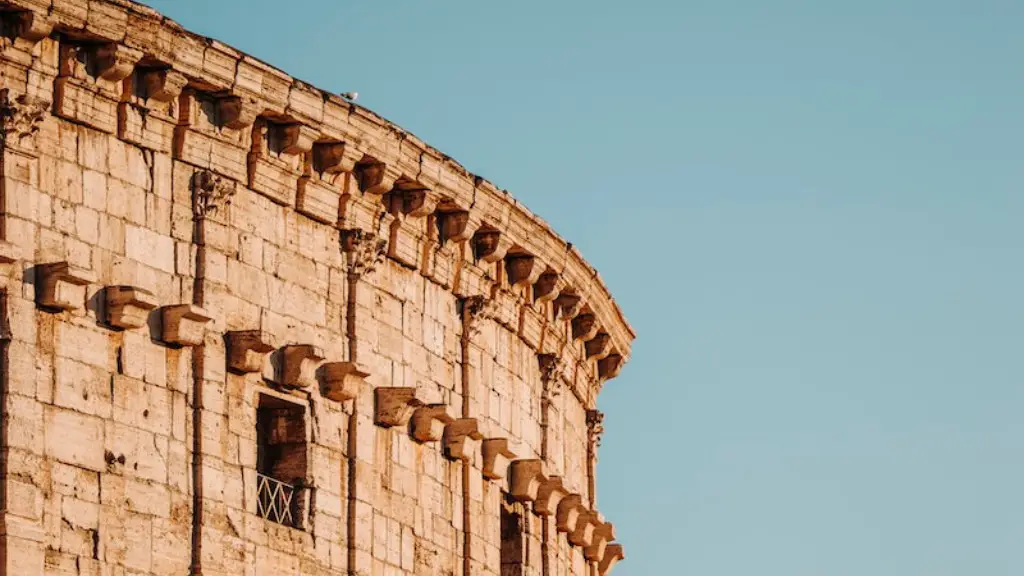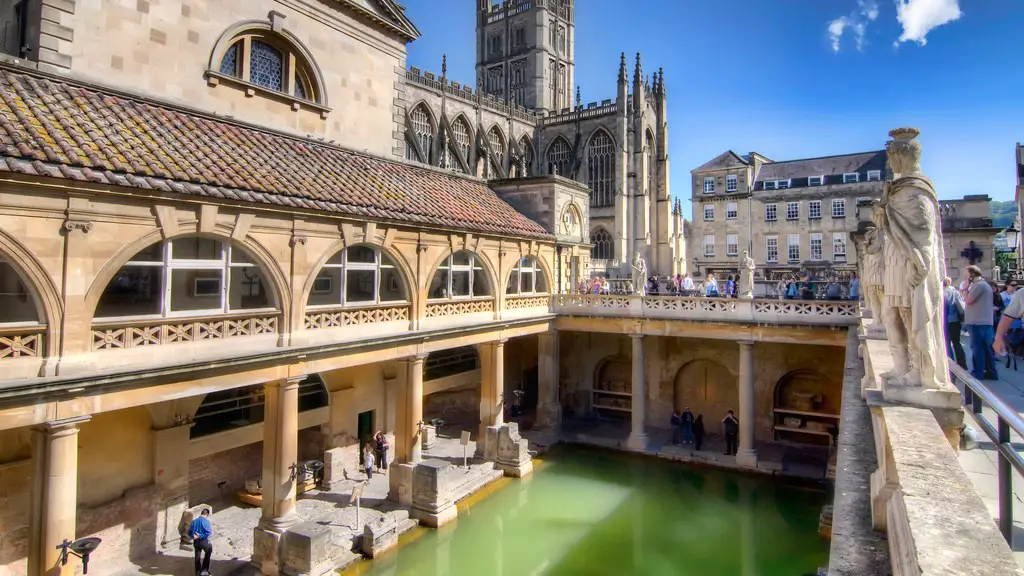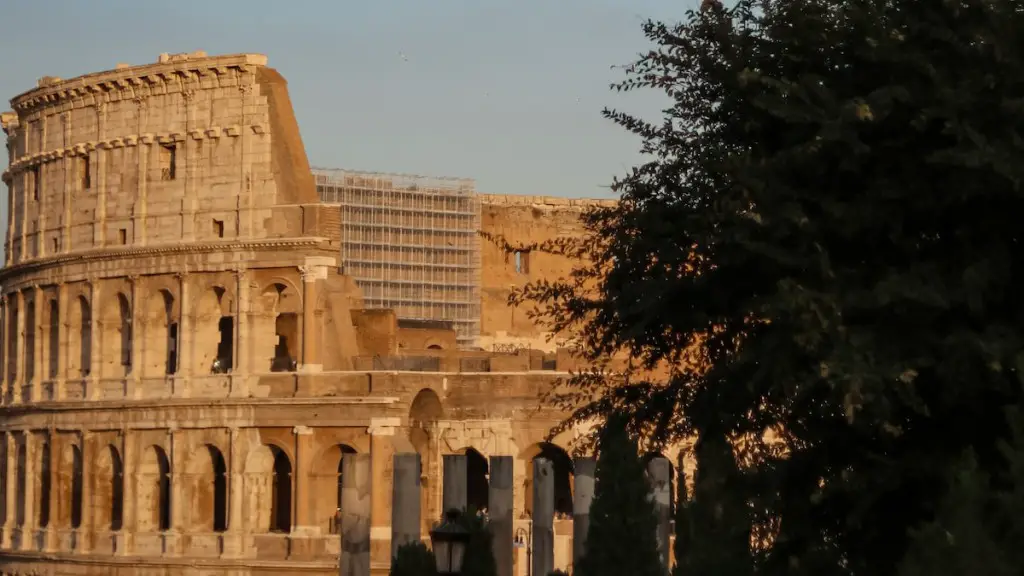Background Information
Roman education during the Classical period can be divided into three phases: the Trivium, Quadrivium, and higher education. Education in Ancient Rome was first established with the establishment of Rome’s first state school. Studies were tailored to students between 10 to 16 years of age and included reading, writing, and mathematics. These basic skills were supplemented with the appreciation of literature, music, and art. During the classical period, education was seen as a means to reinforce a healthy body and mind, which were essential for success in the elite social and military hierarchy.
An Analysis of Ancient Rome Education
The Trivium was the first phase of Roman education, where students or “students of the trivium” would receive formal instruction in the three Rs: reading, writing, and arithmetic. This was followed by the Quadrivium, which consisted of the four liberal arts: grammar, logic, geometry, and rhetoric. This phase was a sophisticated form of education, meant to prepare one for higher education and the life of a professional. Higher education focused on topics such as philosophy, law, medicine and many other specific, specialized fields of study.
The study of the liberal arts, specifically rhetoric and philosophy, was seen as a way to strengthen the unity of the Roman Empire and unite its people. The majority of educational institutions catered to the aristocratic class of Rome and were funded by wealthy individuals and families who could afford such luxuries. However, as the Republic transitioned into an Empire, education spread to lower classes of citizens.
Education in the Roman Republic
In the Republican period, all Roman citizens had an equal right to education, regardless of socio-economic standing or class, but many wealthy families chose to send their sons to an educational institution of higher learning, known as a ludus litterarius, in order to gain a more prestigious education. These institutions focused on teaching rhetoric and the art of persuasive speaking, which were skills highly sought after in Roman society. This is why many upper class Roman leaders, such as Cicero, rose to prominence.
In addition to traditional academic subjects, ancient Roman education also included physical education and military training. All boys were expected to begin their training in the military by the age of 14 and were typically taught by experienced Roman soldiers who were retired from the military. This type of training was typically done at the local ludus, which is a school for military recruits, and served as a preparatory stage for them to enter the official Roman military.
Education and Social Mobility
In the Roman Republic, a person’s social standing and social mobility were heavily affected by the educational level a person had achieved. As such, education was seen as a way to ensure social mobility and upward social standing among Roman citizens. Wealthy families also placed a strong emphasis on education as a way to ensure their sons would rise within the ranks of Roman society.
Scholars estimate that Roman schools and universities of the time had a student-to-teacher ratio of between 10 to 15, meaning that the education was often personalized and tailored to each individual student. Roman teachers were seen as authority figures, and their students were expected to listen and obey their instructions.
Women and Education
For much of ancient Roman history, girls were excluded from formal education, but this changed during the mid-fourth century as the Roman Empire flourished. Some wealthy families did send their daughters to private schools, but these were few in number. Typically, most girls received their education from their mothers, grandmothers, and aunts, who would teach them basic skills such as cooking, sewing, and other domestic duties.
However, as the Empire began to decline, education once again become more accessible to both women and men. Girls were now allowed to attend the same schools as boys and were provided with the same curricula, though they were still subject to sexist biases that favored male students over female ones. Despite this, some women did rise to prominent positions in Roman society, such as Cecilia Metella, who became a consul in her own right.
Conclusion of Ancient Education Structures
Education in Ancient Rome was inspired by the Greek model of formal instruction and was typically seen as a way to attain greater social standings and access to privileges. While the Trivium and Quadrivium served as a foundation for more specialized studies, the higher level of education focused on specific subjects such as law and medicine. Women, although initially excluded from formal education, began to gain more access to education in the later phases of the Roman Empire.
Education and Religion in Ancient Rome
Religion played an integral role in ancient Rome, and many of the educational institutions were associated with religious beliefs. Education in religion and mythology was a major part of Roman schooling. The gods and goddesses of the religion were widely popular and widely worshipped, and their stories and teachings were often used to educate Roman people. Roman teachers took it upon themselves to teach their students the fundamentals of the religion, such as the different gods and goddesses that they should pay reverence to.
Roman children were also taught the importance of religion-based festivals and rituals, and were even taught the art of sacrifice in order to appease the gods and goddesses. Roman philosophers also had a major impact on religious education and many of them drew upon the teachings of the gods and goddesses in order to impart philosophical concepts. It was believed that by understanding the lessons from the gods and goddesses, one could attain wisdom and knowledge.
Education for Slaves in Ancient Rome
The education of slaves was quite different from that of Roman citizens in the ancient world. Most slaves were not allowed to attend formal schools, though some were able to attend ludi litterarii, or schools for literate instruction. Most slaves were illiterate, however, and were unable to attend these schools. Instead, they were taught the basics of their duties by their masters and received informal training.
Slaves were expected to be loyal to their masters, and their behaviour was heavily monitored. Most slaves were not allowed to participate in any form of social or political activities, nor were they allowed to attend any formal education institution. It was believed that their education should be restricted to the bare minimum and that learning should be confined to their duties for their masters.
The Legacy of Ancient Rome Education
Today, the legacy of ancient Roman education continues to influence modern educational systems around the world. From the basic three Rs to more advanced concepts such as the Quadrivium and their emphasis on the liberal arts, modern education still holds many of Rome’s methods in high regard. Religion also plays a role in modern school systems, though it has been relegated to its own subject rather than being integrated into the curriculum.
The legacy of Roman education is also seen in the way we promote social mobility and upward mobility through the educational system. While there are still those who are unable to access quality education, the idea that anyone can rise through the ranks of society with education is still very much alive today. Roman education was a powerful strength in its day, and its legacy still stands tall in the modern world.


